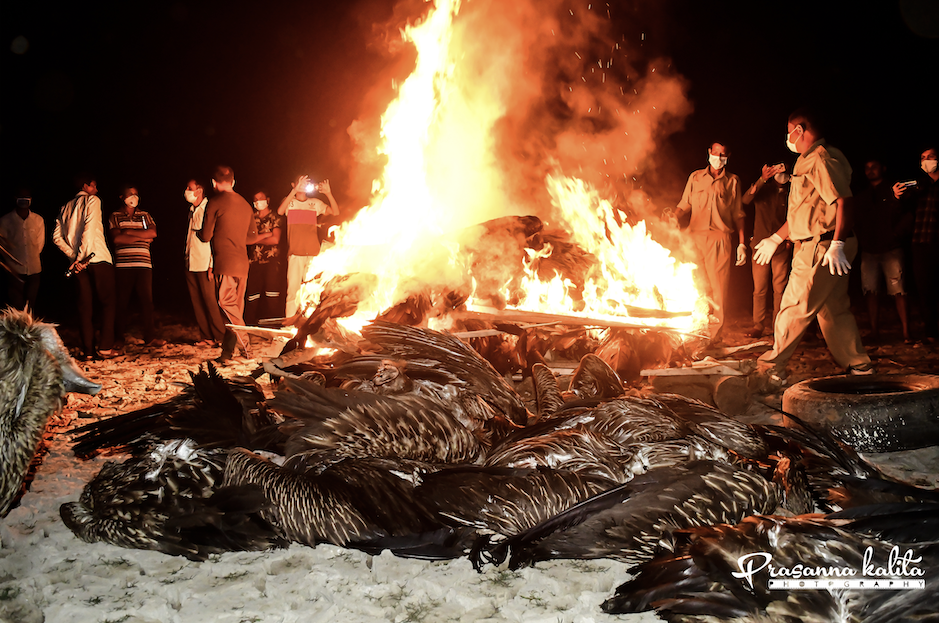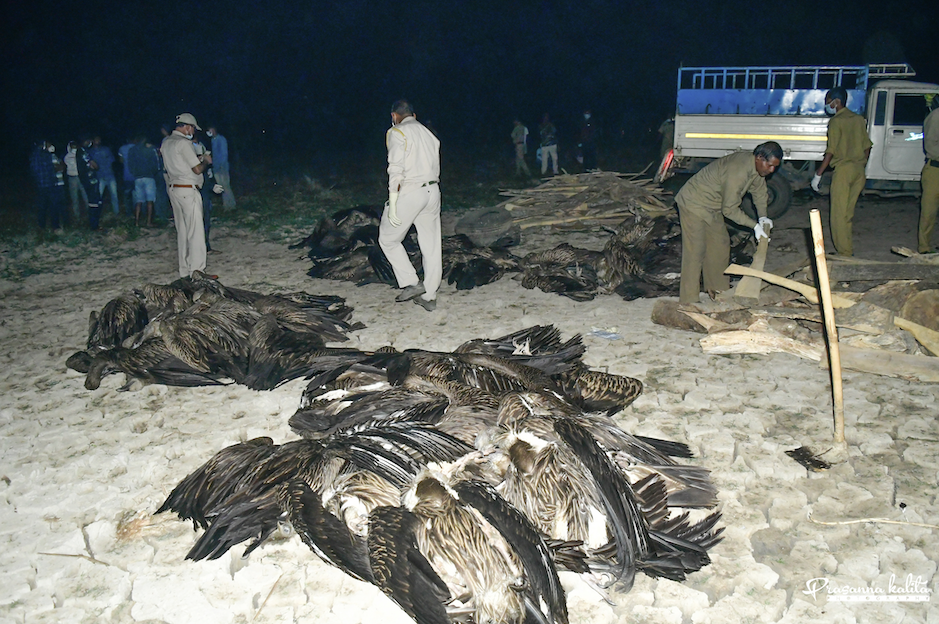
A mass vulture mortality event recently transpired, causing significant damage – as a result of a suspected poisoning incident, at least 100 protected vultures died in Assam, India.
About 100 vultures poisoned to death in Assam
Last Thursday, locals found many vultures dead at Milanpur, Chaygaon, and soon informed the authorities. Field staff from the Assam Forest Department and Bombay Natural History Society immediately responded to manage the incident. Veterinarians hurried to the scene to treat the animals that were alive but in critical condition. In the end, their efforts saved ten vultures and one Steppe eagle.


Based on the first impressions and circumstances of the incident, the officials suspected a poisoning incident led to this tragic mass vulture mortality. During the night, field staff spent three hours burning the carcasses of 98 vultures and one Steppe eagle to prevent the poison from entering the food chain, thus avoiding further mortality.
The next day, they further searched the area and discovered two more carcasses, which brought the total mortality toll to 100 vultures, a devastating loss. The species affected were Himalayan Griffon Vultures (Gyps himalayensis), a migratory vulture for Assam considered near threatened according to the IUCN’s Red List.
Investigating the incident and identifying a suspect
At the scene, they found two carcasses – a goat and a dog. Dogs often injure goats and calves in the area, which creates a conflict with farmers. Most likely, the offender(s) laced the goat remains with a pesticide targeting dogs. Since poisoning is a highly harmful and unselective practice, the vultures died from unintentional poisoning instead after feeding on the carcasses. The officials already detained a man who lost two goats to a dog attack a few days ago, based on villagers’ accounts. Although, it would be difficult to take stringent action against him if he is the offender.
The officials suspect it was a case of poisoning using the highly toxic pesticide Furadan (Carbofuran), but are still awaiting the postmortem and forensic report to confirm the cause of death.
Mass vulture poisonings are not a rare event in Assam
Unfortunately, mass deaths of vultures are not uncommon in Assam. In January 2021, 36 critically-endangered vultures died in Tinsukia in Eastern Assam. The Critically Endangered Slender-billed Vultures (Gyps tenuirostris) and White-rumped Vulture (Gyps bengalensis) were among the dead and injured. A few weeks later, another similar incident occurred, again in the Tinsukia district. In February 2021, twenty more vultures lost their lives. Victims included the Critically Endangered White-rumped Vulture. Experts suspected that in both cases, poisoning was behind the mass deaths of vultures. Following the deaths of vultures in the region, officials are preparing to hold a massive awareness drive in nearby areas to help address the issue.
Vulture population crash in Indian sub-continent
In recent years there have been increasing reports of widespread use of poison impacting wildlife across Africa and Asia. Usually, poison baits are used to kill predators like foxes to protect livestock, but this non-selective and illegal measure often kills many other animals, including vultures who descend to feed on the poisoned carcass.
Vultures underwent a catastrophic decline in the Indian sub-continent due to diclofenac, an anti-inflammatory drug used to treat livestock. In India, the three Gyps species (Indian Vulture, Slender-billed Vulture and White-rumped Vulture) declined by about 95% within less than a decade by the late 1990s, with dramatic declines also observed in nearby countries. Following years of campaigning by environmental activists, a ban on the drug is now in place, and some species start to recover. However, a study illustrated that even though diclofenac’s availability declined in Bangladesh, India and Nepal after its ban, diclofenac still accounted for 10–46% of all NSAIDs offered for sale for livestock treatment in 2017 in India. These results indicate weak enforcement of existing regulations and highlight the continued threat this poses to vultures.
According to the Multi-species Action Plan to Conserve African-Eurasian Vultures (Vulture MsAP), co-developed by the Vulture Conservation Foundation (VCF) and endorsed by CMS, poisoning by veterinary drugs like diclofenac or other substances used against predators is the biggest threat to vultures worldwide. Vultures are keystone species that operate vital roles in maintaining ecosystem health and need our protection.
The VCF and partners are committed to protecting vultures from these severe threats and have been working on anti-diclofenac and anti-poisoning activities in Europe for years now.
It is vital to take urgent action to help prevent mass poisoning incidents of vultures in India by raising awareness, mitigating human-wildlife conflict, enforcing existing regulations and exercising strict penalties against offenders.